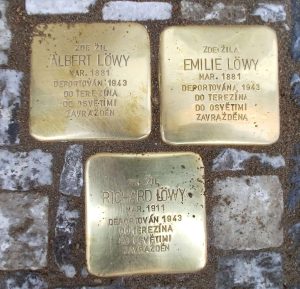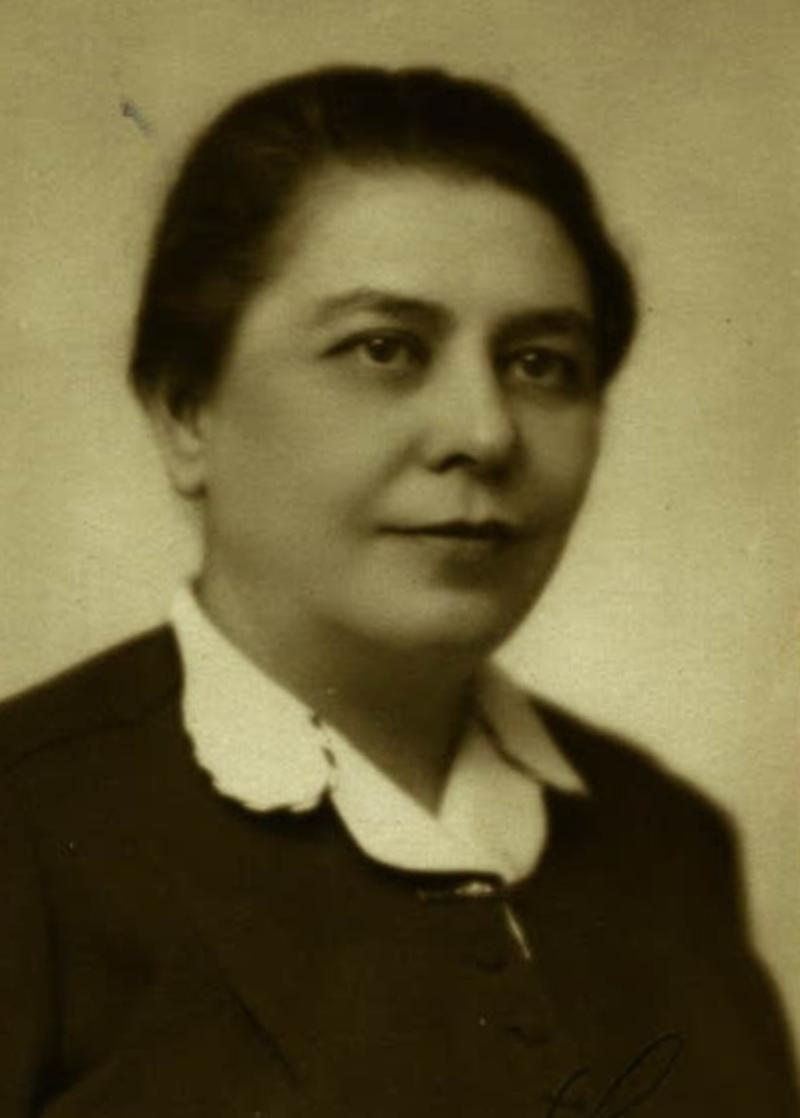 Address: ŠTĚPÁNSKÁ 630/53, PRAGUE 2
Address: ŠTĚPÁNSKÁ 630/53, PRAGUE 2
Born 20. 12. 1881
Last residence before deportation: Prague II
Address/place of registration in the Protectorate: Prague II, Štěpánská 53
Transport Cv, no. 604 (06. 03. 1943, Prague -> Terezín)
Transport Dm, no. 3998 (06. 09. 1943, Terezín -> Auschwitz)
Murdered
„Albert, my grandfather, was half-owner of a successful retail business located at 30 Václavské Námĕsti’; his equal partner was one Max Tausig. Despite this joint ownership, they gave the business the name ‘Tausig & spol’, since it was felt that the name Tausig was less Jewish-sounding than Lőwy – although Max and his family were, in fact, Jewish. They too all perished in the Holocaust. The business sold high-end women’s lingerie and other garments, as far as I know; it imported stock from outside Czechoslovakia – including the UK, which was the reason for a bank account they established there.
The family comprised Albert, his wife Emilie, known as Mila, and three children; the oldest was Richard, born in 1911, his younger brother Franz, known as Franta, and my mother Gertrud, known as Gerti, born in 1916. They all lived in a large apartment in the mansion block located at 53 Štĕpánská; it is believed that Emilie’s sister, and her family, also lived in the same building, in the apartment next door. It can be seen that Albert did not have to walk too far to arrive at his workplace!
Their lives were clearly relatively privileged, and included an annual summer stay in Velden, a lake-side resort in Austria – taking their own pillows and sheets with them, in trunks! My mother was actually sent to a finishing school in the UK after she had completed her secondary school education. For that, her parents had chosen to send her to a convent school, which reveals the low level of Jewish religious observance in the family. Franz enjoyed life as a young man about town, probably pretending to study at Charles University. After law school, Richard had started to work for the family firm.
It was at this point that the story gets darker. My mother had already decided to leave in 1938 or 1939, and stayed for a while in Holland, before coming to the UK; her brother Franz departed on the last train out of Prague, just before war started. But for the parents, and older brother Richard, a different fate befell them. Richard made a positive decision to return to Prague from Italy, where he had been on holiday. It was said that he had returned to persuade the parents to leave; in the event, he failed, and decided to remain with them. In November 1939, the business was ‘Aryanised’, and formally taken over by a non-Jewish Czech person that the Germans selected. We do not know how it was made possible, but we are certain that the parents and Richard were able to remain at 53 Štĕpánská until they were removed to Terezin in March 1943, on transports Cv 602, 603, and 604. From there they were transported to Auschwitz on 6th September 1943, on transports Dm 3997, 3998, and 106. We do not know when they were put to death, but for Richard there is one interesting piece of evidence: he was allowed to send a postcard to a lawyer friend, and this was dated March 1944; the postmark indicates that he was held at Birkenau – otherwise known as Auschwitz II – which housed those kept for forced labour. The wording on his card – written in German, which was the language spoken by all the family – concealed two coded messages: the first referred to Onkel Hladovy – the Czech word for ‘hunger’; the second used an abbreviation to pray for an end to the Reich.
Neither my mother nor my uncle Frank, as I subsequently knew him, ever spoke about those times. They must have missed their parents and Richard dreadfully, but they did not dwell on the past. In addition, we could assume that there might have been a level of survivors’ guilt, plus bitterness that their parents and brother had not themselves decided to leave at an earlier point.“
